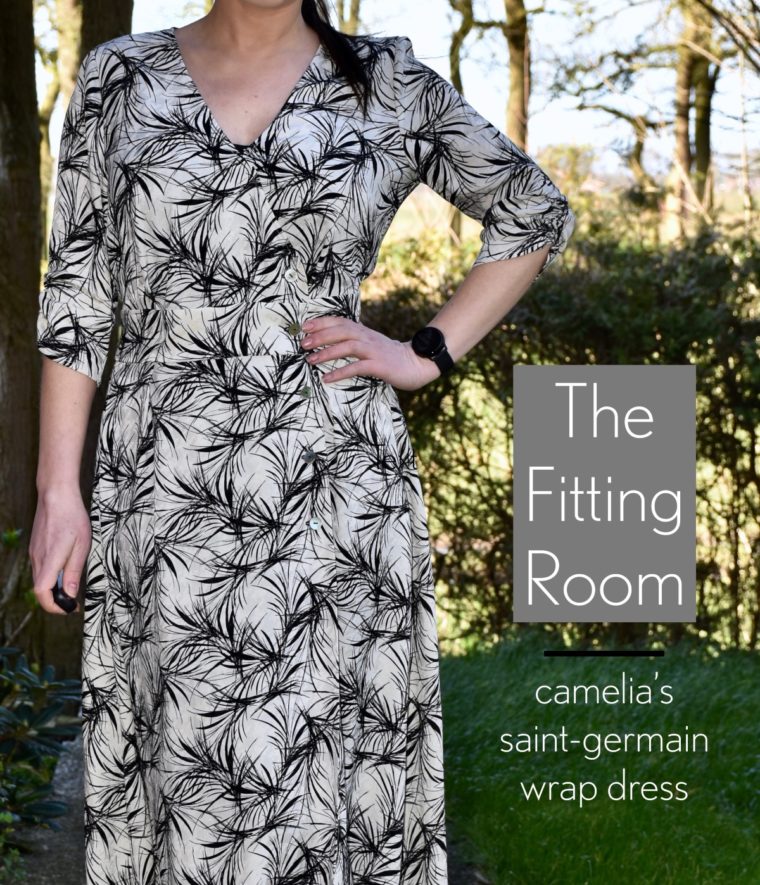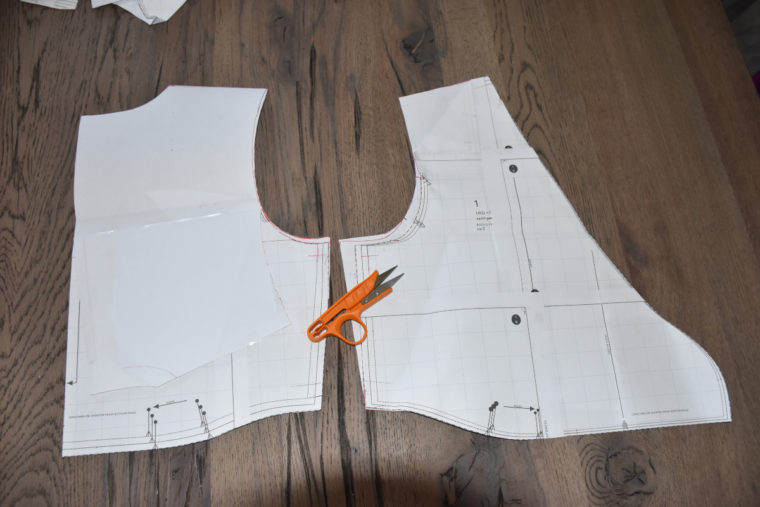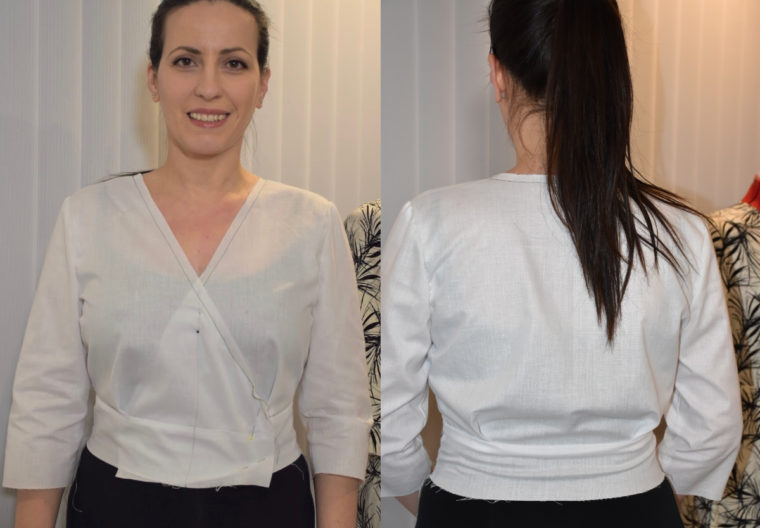Camelia recently shared her journey of achieving a flawless fit for her Saint-Germain Wrap Dress. She’s always been meticulous about her sewing process, and this project was no exception. Camelia used her extensive experience with fitting her own body type and the invaluable feedback from the muslin process to her advantage. To ensure absolute precision, she created not one, but two muslins. Her attention to detail paid off beautifully, as the final dress fit her exactly as she envisioned. The accompanying photos and detailed explanations she provided in her blog post clearly demonstrate the steps she took to resolve her fitting challenges—effortlessly and efficiently.

I personally fell in love with the Saint-Germain Wrap Dress as soon as it was released. Both the original cover dress and Liesl’s floral version are simply stunning and incredibly romantic. For my final dress, I chose a beautiful rayon fabric. However, like Camelia, I never skip the muslin stage when working with woven patterns. Over the years, I’ve learned that certain adjustments are almost always necessary: a swayback adjustment, a narrow shoulder adjustment, and a full bust adjustment.
In this instance, I tackled all three. My initial bodice muslin, based on my size 10 B cup measurements, revealed the areas needing attention. I anticipated that the skirt would fit well since it offers ample ease over the hips, so I skipped muslin-ing it.

I used lightweight cotton for my muslin, while my final fabric is a rayon with slight stretch. Looking back, this wasn’t ideal because it’s always better to use the same type of fabric for your muslin as you plan to use for your finished garment. This ensures a more accurate fit by matching the fabric’s stretch, weight, and drape.
The images above clearly show the adjustments required. The center front didn’t align properly, the shoulder seam was too long, and the back had excessive length. There are multiple methods for performing a full bust adjustment, including the slash method (which adds a dart), the seam manipulation method, and the pivot-and-slide method. After reviewing the options, I opted for the pivot-and-slide method since the dress pattern lacked a dart. Adding 1.5 cm (5/8â€) to the bust area seemed to do the trick.
For the narrow shoulder adjustment, I removed 1 cm (3/8â€), and for the swayback adjustment, I took out 2 cm (3/4â€). Below are my adjusted pattern pieces.

The second muslin confirmed that these modifications were successful. The center front aligned perfectly, and the back fit beautifully.

These changes were straightforward and didn’t take much time at all. Now I have a pattern that fits my body exactly how I want it to, allowing me to reuse it countless times. I find great satisfaction in completing the fitting work before cutting into my premium fabric. Knowing the final garment will fit perfectly makes the entire sewing process far more enjoyable, saving both time and resources.

If you’re a fellow fitting enthusiast who enjoys customizing garments using proven techniques, we’d love to hear from you! Drop us a note at contributors@oliverands.com if you’d like to share your experience fitting a Liesl + Co. or Oliver + S pattern.
---
This process is endlessly rewarding, and I’m always excited to refine my skills further. Sewing isn’t just about creating clothes—it’s about personalizing them to reflect your unique style and comfort. Whether you’re a seasoned sewer or just starting out, mastering fitting techniques can elevate your projects to new heights. Happy sewing!
Gift Box Socks,Winter Kids Socks,Womens Tube Socks,Kids Cotton Socks
Shaoxing Evergreen Knitting Co., Ltd. , https://www.egsock.com